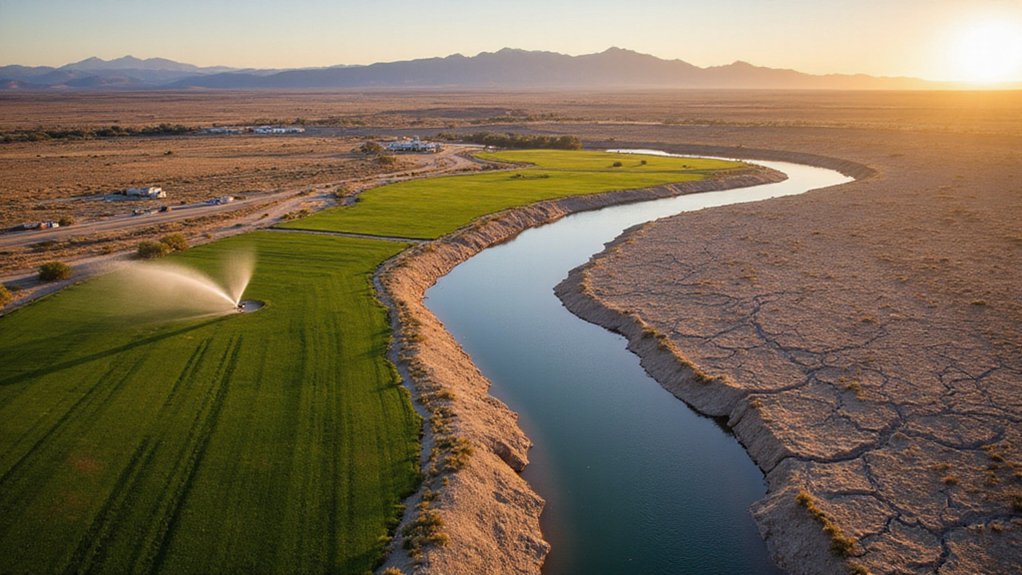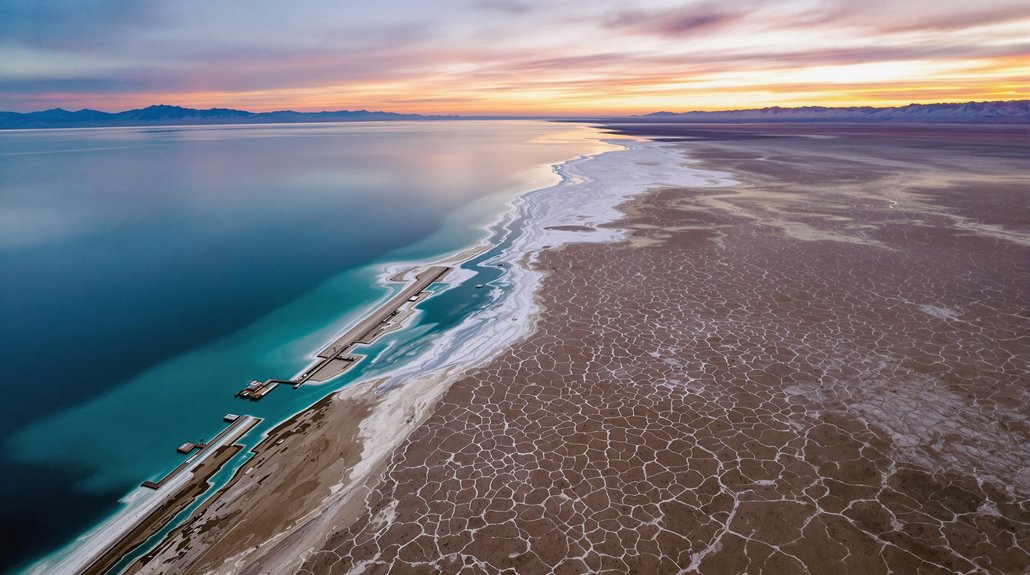The Colorado River Basin is bleeding out underground. Since 2003, it’s lost 34 cubic kilometers of groundwater—enough to drain Lake Mead completely. That’s 1.2 million acre-feet vanishing yearly, double the rate of surface water losses. Meanwhile, 82% of Arizona’s groundwater pumping runs wild without regulation. Farmers keep drilling deeper as aquifers collapse. Everyone from Denver to San Diego depends on this water, but the invisible crisis stays hidden until the taps run dry.
Desperation has a way of revealing itself slowly, then all at once. The Colorado River Basin is hemorrhaging groundwater at an alarming rate—over 1.2 million acre-feet annually. That’s not a typo. Since 2003, the region has lost 34 cubic kilometers of underground water, roughly equivalent to draining Lake Mead completely. Let that sink in.
NASA’s satellites don’t lie. They’ve been watching this slow-motion disaster unfold for two decades, documenting groundwater losses that dwarf the depletion of surface reservoirs by more than double. While politicians squabble over water rights, farmers keep pumping. Agricultural operations remain the biggest culprit, sucking up reserves faster than nature can replenish them. In Arizona, 82% unregulated groundwater pumping allows large farming companies to expand without any restrictions on extraction.
The math is brutal. The Colorado River system loses about 1 million acre-feet more water each year than it receives. Rising temperatures aren’t helping—they’re cooking away the moisture that would normally seep into underground aquifers. Drought conditions have become the norm, not the exception. The years 2000 to 2002 marked one of the driest periods in over a millennium for the basin.
America’s two largest reservoirs are approaching critical lows. The Bureau of Reclamation expects 2025 to be “another very dry year” with “significant consequences.” That’s government-speak for serious trouble ahead. Despite conservation efforts—which mainly involve paying farmers not to farm—reservoir levels continue their death spiral.
The seven Colorado River Basin states can’t even agree on how much pain to share. Lower basin states like California, Arizona, and Nevada say they’re prepared for 1.5 million acre-feet in cuts. Federal officials suggest they’ll need to swallow 3.2 million. Good luck with that negotiation.
From Denver to San Diego, from the Rockies to northern Mexico, millions depend on this overtaxed system. Groundwater was supposed to be the safety net, the buffer during dry years. Instead, it’s vanishing into thin air—or rather, into alfalfa fields and golf courses.
Current depletion rates suggest critical shortages aren’t decades away anymore. They’re knocking at the door. The hidden crisis beneath our feet might just become the visible catastrophe above ground sooner than anyone wants to admit.
References
- https://www.circleofblue.org/newsletter/the-stream-may-29-2025-colorado-river-basin-losing-groundwater-at-increasing-rate-data-centers-come-to-brazils-water-scarce-states/
- https://phys.org/news/2025-05-groundwater-rapidly-declining-colorado-river.html
- https://www.ppic.org/publication/the-colorado-river/
- https://watereducationcolorado.org/fresh-water-news/what-could-future-colorado-river-water-cuts-look-like-states-look-to-this-years-weak-snowpack-to-find-out/
- https://www.latimes.com/environment/story/2025-05-30/spring-snowpack-water








